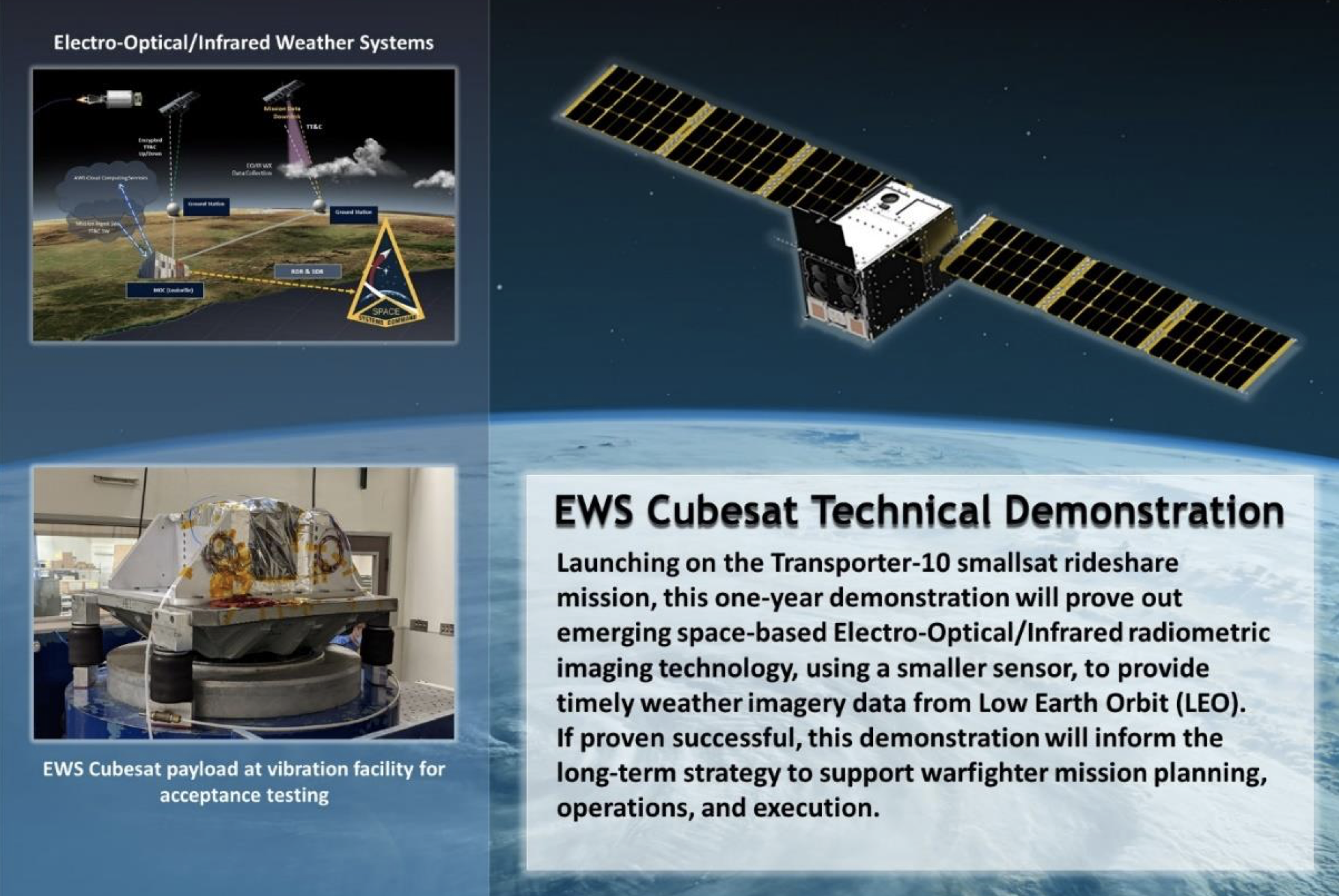Space Force’s weather-imaging mission takes flight again after initial setback

WASHINGTON — A small satellite mission funded by the U.S. Space Force to provide weather data from low Earth orbit launched to orbit March 4. This marked the Space Force’s second attempt to deploy the weather-imaging mission, a year after the initial satellite failed to separate from the launch vehicle.
The Electro-Optical/Infrared (EO/IR) Weather Systems (EWS) demonstration cubesat — built by Orion Space Solutions — launched aboard the SpaceX Transporter-10 rideshare mission from Vandenberg Space Force Base.
Over a planned one-year demonstration, the Space Force wants to assess the capabilities of the cubesat to provide timely weather imagery data from space. This is a priority for the Defense Department that needs to fill a gap in weather coverage as the military’s decades-old Defense Meteorological Satellite Program satellites are running out of fuel and projected to be out of service in the near future.
Demo to inform future program
“The EWS cubesat technical demonstration effort represents SSC’s continued commitment to working with non-traditional partners,†said Lt. Col. Joe Maguadog, EWS materiel leader and program manager at the Space Systems Command.Â
“This demonstration will inform our transition toward a more affordable, scalable, and resilient EO/IR weather constellation,†he said March 5.
In June 2020, the Space Systems Command selected two vendors for EWS demonstrations. Orion Space Solutions, based in Louisville, Colorado, got a contract to build a cubesat. Another EO/IR weather imaging satellite is being developed by San Diego, California-based General Atomics Electromagnetic Systems for delivery in 2025.
Both demonstration satellites will collect weather imaging and cloud characterization data from low polar orbits.
A previous EWS cubesat technology demonstration launched on the SpaceX Transporter-6 rideshare mission in January 2023 but experienced an on-orbit separation anomaly.
The Space Systems Command awarded Orion Space Systems a new contract to build another satellite that launched on Transporter-10.
The U.S. military and allies rely on weather data from satellites to plan military operators such as flight routes, combat search and rescue, maritime surface tracking efforts, enemy missile observation and intelligence collection.
The Space Force also is exploring the possibility of buying weather data as a service as an alternative to buying and operating satellites.
Related
Read the original article here






